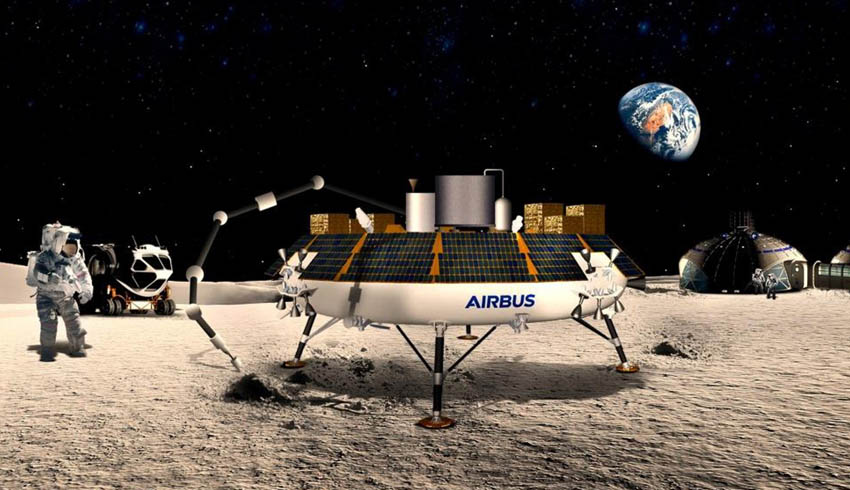After two years’ development the breakthrough came last month, during a series of laboratory tests at Fraunhofer IFAM. Oxygen was extracted from a sample of simulated lunar dust. This is a small first step, but the way towards an operational system is now clear.
Airbus believes ROXY could revolutionise human space exploration. Oxygen is indispensable for all human space activities, and this new ROXY production method, which directly uses moon dust, could revolutionise human activities on the lunar surface.
Jean-Marc Nasr, head of space systems at Airbus, said, "This breakthrough is a massive leap forward – taking us one step closer to the holy grail of being able to sustain long term living on the moon."
ROXY enables the design of a small, simple, compact and cost-efficient regolith to oxygen and metals conversion facility, and is therefore ideally suited to support a wide range of future exploration missions.
"ROXY is proof positive that collaboration between industry and world-leading scientists can bring huge tangible benefits that will continue to push the boundaries of future exploration," Nasr added.
Dr.-Ing. Peter Quadbeck, group manager metal hollow spheres and open-cell structures and project manager of ROXY at Fraunhofer IFAM, expanded on the comments of Nasr, explaining, "The project has impressively shown that co-operation between research and industry can take on completely new dimensions, especially if one looks and works beyond the familiar horizon."
Not requiring additional materials or consumables from Earth – except the ROXY reactor itself – this could be the heart of an integrated value chain using additive layer manufacturing to produce a wide range of products ‘Made on the Moon’.
Sonia de la Rosa, head of the aerospace division of Abengoa, added, "It has been a great opportunity to bring Abengoa's energy background and industrial experience to help develop clean metal production processes. It enables the development of exciting technologies for space exploration and in-situ resource utilisation; setting the ground for integration with renewable energy production options to minimise their environmental footprint and increase their efficiency."
These could include metals, alloys and oxygen. Combined with lunar ice, it would even be possible to produce rocket fuel from ROXY metal powder.
On Earth, ROXY opens a new pathway to drastically reduce the emissions of greenhouse gases that result from production of metals. With current technologies, global metal production causes severe environmental impacts.
Boston University Engineering Professor Uday Pal added, "It was gratifying to be part of the team that designed the inert anode and selected the materials for the reactor. I look forward to continuing work on the next generation of the ROXY reactor and contributing to designing an exciting, advanced Green process."
Steelmaking accounts for about 5 per cent of the total global CO2 emissions. Many metals are obtained with processes that emit significant amounts of the environmentally harmful perfluorocarbons (PFCs).
Since ROXY is essentially an emission-free process these environmental impacts could be reduced, providing a significant contribution to the UN sustainability goals – another example of how space technologies can improve life on Earth.

